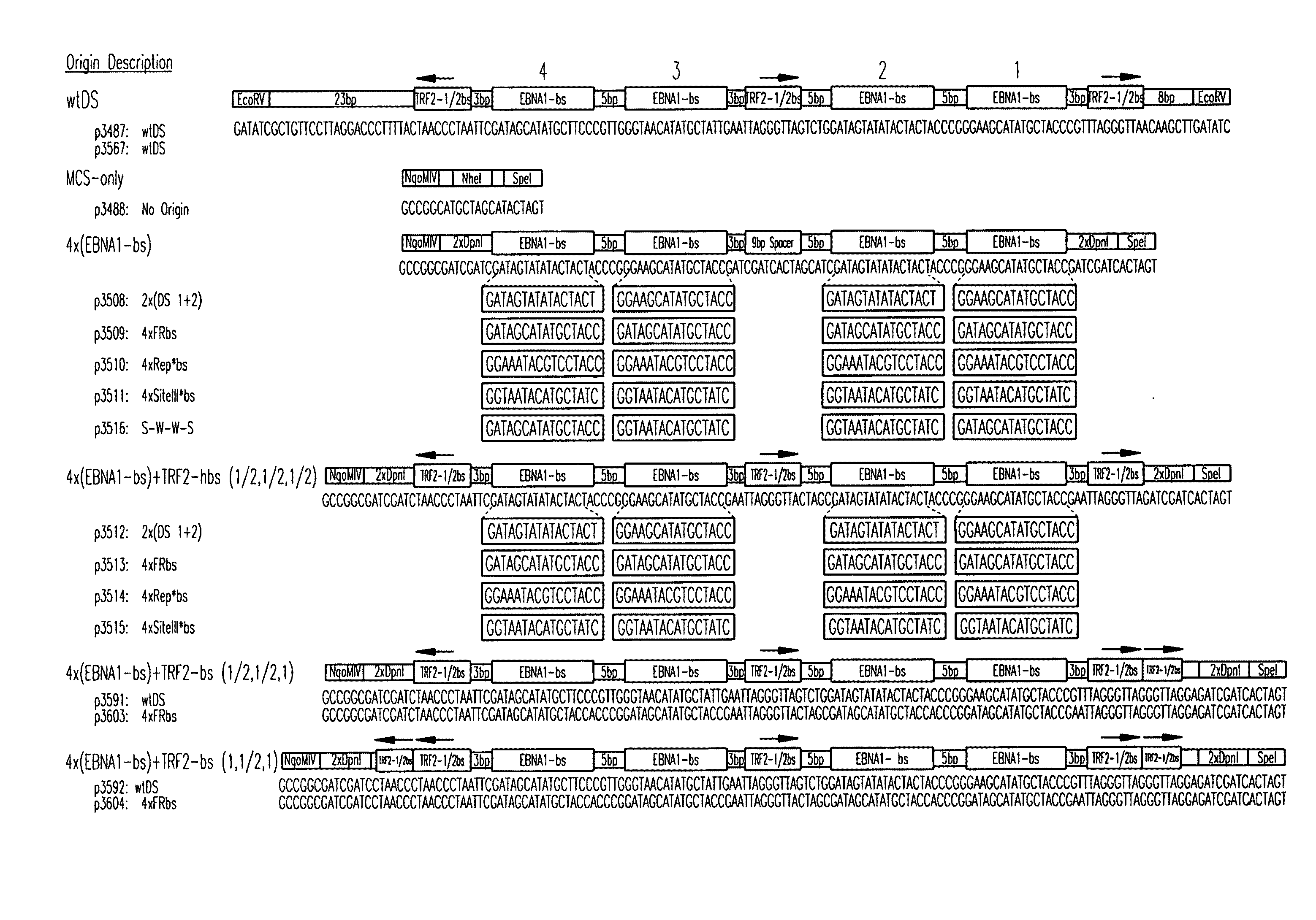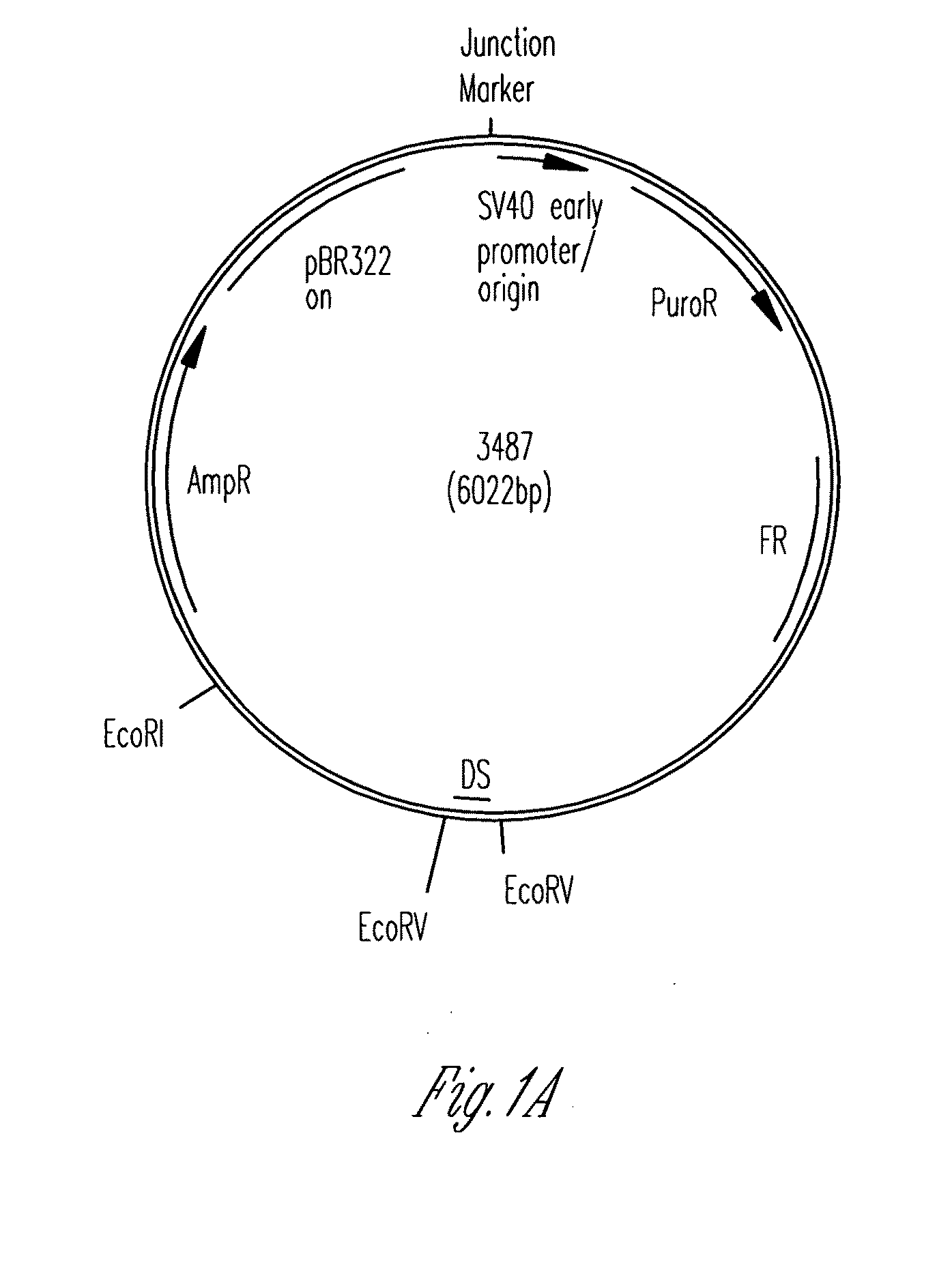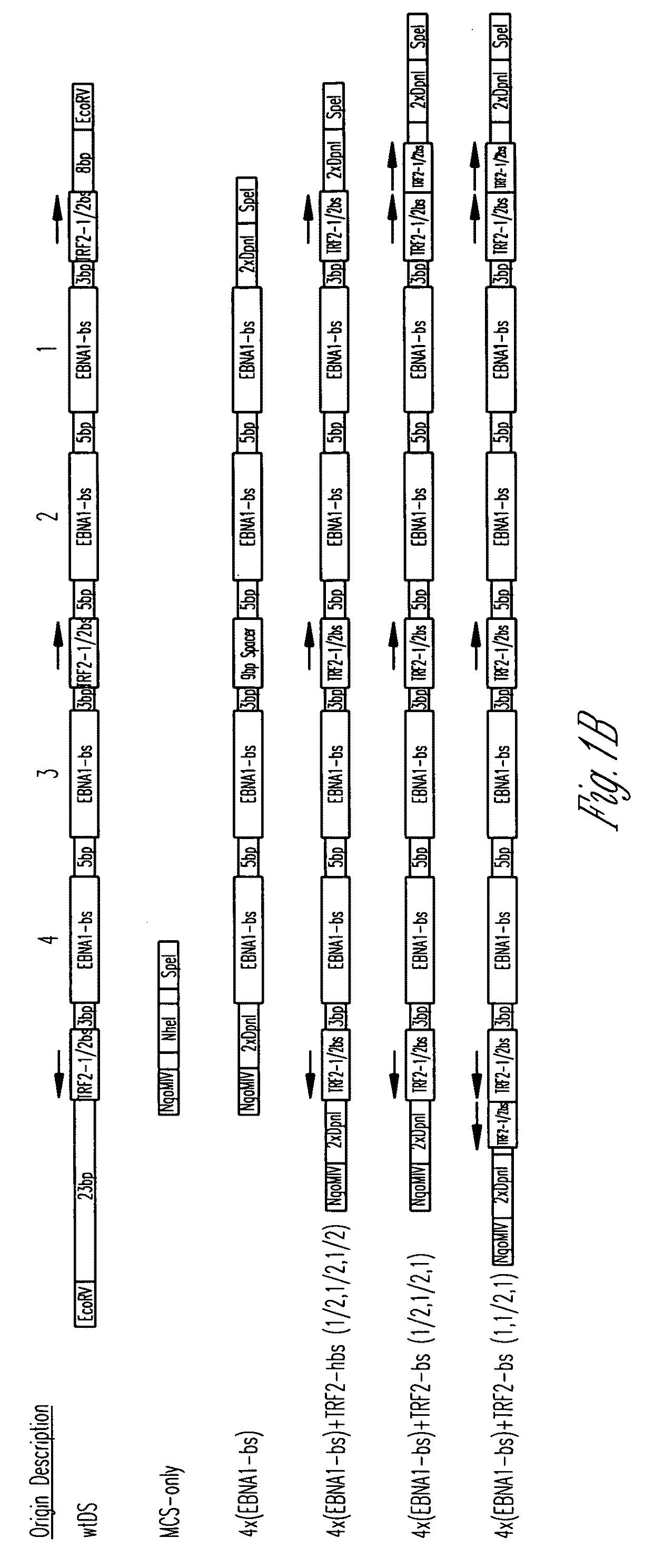EFFICIENT oriP/EBNA-1 PLASMID VECTOR
a plasmid vector and orip technology, applied in the field of efficient orip/ebna-1 plasmid vectors, to achieve the effect of increasing the apparent affinity of ebna-1
- Summary
- Abstract
- Description
- Claims
- Application Information
AI Technical Summary
Benefits of technology
Problems solved by technology
Method used
Image
Examples
example
Experimental Procedure
[0117]Plasmid Construction. All origins tested in this study are depicted graphically in FIG. 1. Complete representations of these origins, including their sequences, are given in FIG. 2. A positive-control oriP plasmid (p3487) was digested with EcoRV to remove the DS element and an artificial multiple cloning site (MCS) was inserted in its place to create a plasmid lacking origin activity (p3488, “MCS-only” plasmid). All origins were designed to position four naturally-occurring EBNA-1-binding sites of differing affinities (e.g., high-affinity: 4×FRbs, medium-affinity: 2×(DS1+2) and 4×SiteIIIbs, low-affinity 4×Rep*bs) in an arrangement identical to that found in the DS element. This arrangement was chosen to allow comparisons with the element EBV has evolved to use. The interaction between the TTAGGG-repeat Binding Factor 2 (TRF2) and EBNA-1 increases the apparent affinity of EBNA-1 for its binding site when a TRF2-half-binding site is positioned 3 bp away fro...
PUM
| Property | Measurement | Unit |
|---|---|---|
| volume | aaaaa | aaaaa |
| temperature | aaaaa | aaaaa |
| capacitance | aaaaa | aaaaa |
Abstract
Description
Claims
Application Information
 Login to View More
Login to View More - R&D
- Intellectual Property
- Life Sciences
- Materials
- Tech Scout
- Unparalleled Data Quality
- Higher Quality Content
- 60% Fewer Hallucinations
Browse by: Latest US Patents, China's latest patents, Technical Efficacy Thesaurus, Application Domain, Technology Topic, Popular Technical Reports.
© 2025 PatSnap. All rights reserved.Legal|Privacy policy|Modern Slavery Act Transparency Statement|Sitemap|About US| Contact US: help@patsnap.com



